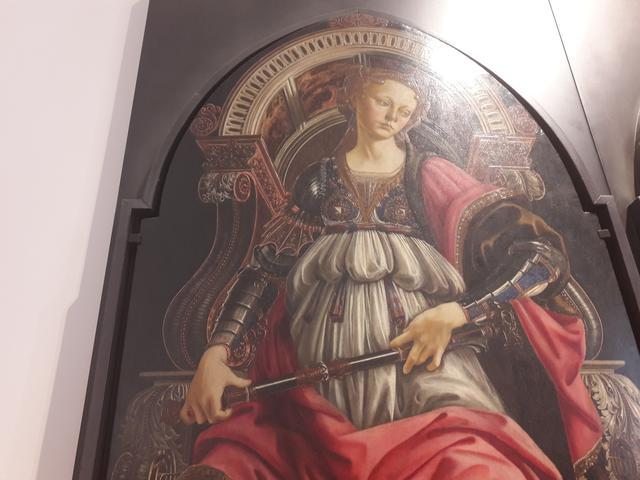Strength

Fortitude is portrayed as a young woman wearing armor over her elegant dress and holding a ruler's scepter. Despite military attributes, Virtue refers to strength and perseverance in the pursuit of good. She is one of the four cardinal virtues, that is, the main human virtues.
The panel is the only one painted by Sandro Botticelli in a cycle of paintings dedicated to the Virtues and commissioned by Piero del Pollaiolo in 1469. The cycle was for the Court Hall in the Piazza della Signoria in Florence, and is now in the Uffizi. Galleries. Botticelli's commission was due to Tommaso Soderini, one of the workers appointed to oversee the execution of the work, thanks to the young Sandro's ties to the Medici faction, of which Soderini was also a part. Pollaiolo's understandable protests helped limit Botticelli's participation in the commission to this single figure. Unlike the other panels in the cycle, painted on cypress wood, the Fortitude is painted on poplar, a wood most commonly used for panel painting in Tuscany. Botticelli's virtue is also highlighted by the different types of marble benches, with their rich engraved decorations. The young woman's body is long and sinuous, while her face already has the languid and melancholic expression so characteristic of Botticelli's female figures.
The Tribunale di Mercanzia was the body that decided commercial disputes between Florentine merchants and administered justice between the guilds, known as Arts. In the 18th century, the wealth and heritage of this judiciary went to the Chamber of Commerce, including the seven paintings of the Virtues, taken to the Uffizi Galleries in 1777.
© Tourblink